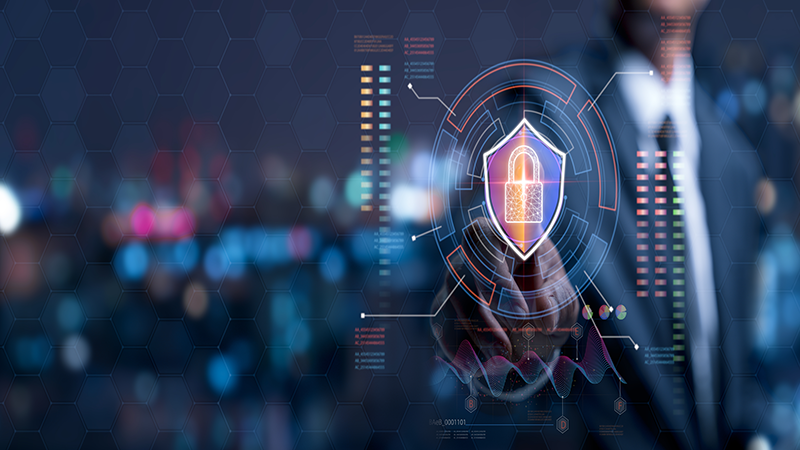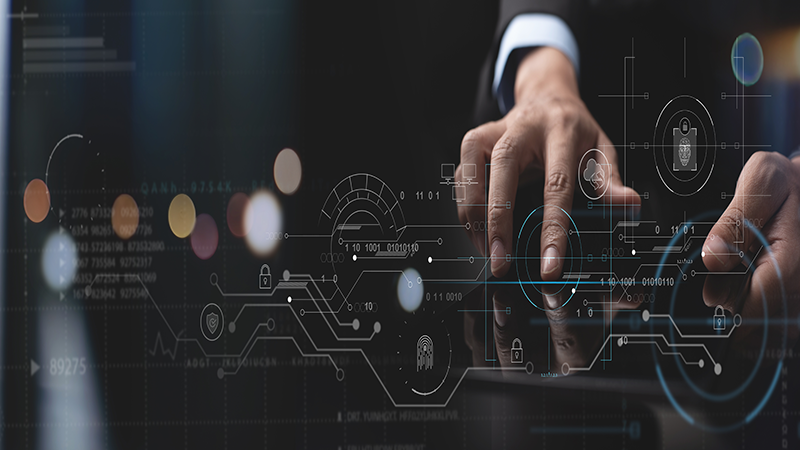In the fast-paced world of cybersecurity, Artificial Intelligence (AI) has established itself as a fundamental tool to combat digital threats. The convergence of AI and cybersecurity has opened new doors to protect sensitive data, critical systems, and digital infrastructure as a whole.
Today, cybersecurity has become an indisputable priority for companies, governments, and individual users alike. With the rise of cyber threats, from ransomware attacks to malicious intrusions, data protection has become more crucial than ever.
In this context, Artificial Intelligence (AI) emerges as an indispensable tool to strengthen digital defenses and combat the growing online threats.
In this blog post, we will explore how AI is transforming cybersecurity and the five ways it is being used to strengthen the online defenses of businesses and organizations. Additionally, we will mention the practical implementations of AI software in cybersecurity.
Challenges of AI in Cybersecurity
AI is revolutionizing the way cybersecurity challenges are addressed and the importance of cybersecurity by providing advanced capabilities for threat detection, prevention, and response.
Through intelligent data analysis and machine learning, AI can identify anomalous patterns, anticipate attacks, and take proactive measures to protect systems and networks.
-
Advanced Data Analysis: AI allows for quick and efficient analysis of large volumes of data. It identifies patterns and anomalies that could indicate malicious activity. Through machine learning algorithms, AI solutions can detect and prevent cyber attacks before they cause harm to sensitive data or confidential information.
-
Real-Time Threat Detection: AI systems can continuously monitor online activity to identify potential security threats. Using behavior analysis techniques, AI can detect suspicious activities and respond proactively to mitigate the risk.
AI algorithms can analyze large volumes of data in real-time to detect suspicious behaviors and anomalies that could indicate an ongoing cyber attack. Artificial intelligence can identify malware and detect intrusions, alerting security teams about possible threats before they cause significant damage.
- Automation: Artificial intelligence automates repetitive and tedious tasks in cybersecurity. This includes deploying security updates, responding to incidents, and managing records. This frees up cybersecurity experts to focus on higher-value activities, such as planning, risk mitigation, and learning new cybersecurity strategies.
In the event of an attack, AI can play a crucial role by providing automated and adaptive responses. AI systems can take quick and efficient actions to contain and neutralize threats in real-time, minimizing the impact of attacks.
-
Future Threat Prediction: Through predictive analysis, AI can anticipate potential cyber threats, identify hacker behaviors, and help organizations prepare to face them. By assessing trends and historical patterns, AI systems can provide early warnings about possible vulnerabilities and recommendations to strengthen defenses.
-
Continuous Adaptation: AI can learn and adapt continuously over time as cyber threats and attack strategies evolve. Artificial intelligence can improve its ability to detect and respond to new threats through self-learning algorithms. This results in more effective, sophisticated, and proactive cybersecurity.
Practical Implementation of AI in Cybersecurity
Artificial Intelligence (AI) is playing a crucial role in a wide range of cybersecurity applications and tools, providing advanced capabilities to detect, prevent, and respond to cyber threats.
Here are more details on how AI is being used in some of these applications:
Intrusion detection systems based on AI that monitor and analyze network traffic for malicious activity. These systems use machine learning algorithms to monitor network traffic and analyze behavioral patterns for malicious activity. AI can proactively identify intrusions and attacks before they cause significant damage.
Threat management platforms that use machine learning algorithms to identify and classify security threats. These platforms harness the power of machine learning to identify, prioritize, and classify security threats in real-time. AI algorithms can analyze large volumes of data to detect emerging threats and provide a quick and effective response.
Vulnerability analysis tools that scan systems and applications for possible entry points for attacks. These tools scan systems and applications for possible entry points for attacks, such as open ports or insecure configurations. AI can identify known and potential vulnerabilities, allowing security teams to address them before they are exploited by attackers.
Security log analysis solutions that identify and correlate security events to detect patterns and trends. These solutions use machine learning algorithms to analyze security logs and audit events for suspicious activity. AI can identify patterns and correlations between seemingly unrelated events, helping to detect intrusions and insider threats.
Conclusion
In summary, artificial intelligence is changing the way we approach online security issues. This gives us advantages such as advanced information analysis, instant threat detection, automatic responses, prediction of possible risks, and constant adjustments.
As we continue to advance in this digital age, the integration of AI into cybersecurity strategies becomes increasingly crucial to protect our digital assets and ensure online security.
In a digitally interconnected and constantly evolving world, cybersecurity is fundamental to protect information and safeguard digital assets. Artificial intelligence emerges as a powerful ally in this fight, offering advanced capabilities for threat identification, examination, and response. By integrating AI into these applications and tools, organizations can strengthen their cybersecurity defenses and protect their digital assets more effectively against a constantly evolving threat landscape.
Do you have any doubts about the use of Artificial Intelligence in Cybersecurity?



